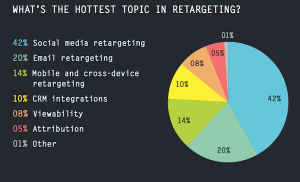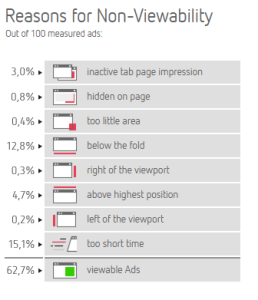Ad Blockers on the Rise in UK; 51% of Marketers Buy Display Ads Programmatically
by Sonja Kroll on 21st Apr 2016 in News


ExchangeWire Research’s weekly roundup brings you up-to-date research findings from around the world, with additional insight provided by Rebecca Muir, head of research and analysis, ExchangeWire. In this week’s edition: Ad blockers on the rise in the UK; Half of UK marketers buy display programmatically; Branded video content booms; and Ad viewability in UK lower than in the rest of Europe.
More Than a Quarter of UK Users Will Install Ad Blockers by 2017
For the first time, eMarketer takes a look at ad blocking behaviour of the future. According to their industry report, roughly a quarter of UK internet users (27%) will have installed ad blockers by 2017, following the trend of the past three years: in 2014, 10% of UK users had installed ad blockers. This figure had risen to 14% in 2015 and is expected to reach 20.5% in 2016.
The majority of ad blockers (90.2%) are currently installed on desktop and laptop PCs, eMarketer claims, while only 28% of users block ads on smartphones. While mobile ad blocking remains relatively low, eMarketer expects these figures to rise in the future. Until now, mobile ad blocking has been technically difficult in apps.
"There’s no doubting that ad blocking is now a very real issue for advertisers. Next year, over a quarter of the people they're trying to reach will be wilfully making themselves unreachable", says eMarketer senior analyst Bill Fisher. "The good news is that numbers like this have forced those within the industry to think long and hard about what it is that they need to do better in order that this practice doesn't become an epidemic."
"One of the most important things that the industry needs to wake up to, in order to wipe out ad blockers, is to treat the root cause of the issue. Publishers need to put user experience ahead of quick monetisation wins", comments Antti Pasila, CCO and Founder at advertising automation specialists Kiosked. "Two key aspects of a successful ad impression include the ad actually getting seen by a user and being relevant either contextually or behaviourally. By positioning ads in key places through a transparent platform, publishers will create a much better overall user experience and go some way to making ad blockers extinct."
51% of Marketers Buy Display Ads Programmatically
According to AdRoll’s State of the Industry Report, more than half of UK marketers now buy display ads programmatically. The majority of marketers (70%) spend between 10% and 50% of their budget on programmatically bought ads, with 15% of marketers spending more than half their budget on programmatic.
 Retargeting continues to be an essential part of marketers’ strategies. The hottest topic in this area is social retargeting: 42% of those asked for the study identified it as the most important area of interest. Two-thirds of marketers (66%) are already buying social media space programmatically, and 36% are planning to increase their retargeting budget in 2016.
Retargeting continues to be an essential part of marketers’ strategies. The hottest topic in this area is social retargeting: 42% of those asked for the study identified it as the most important area of interest. Two-thirds of marketers (66%) are already buying social media space programmatically, and 36% are planning to increase their retargeting budget in 2016.
UK marketers are buying programmatically on mobile (40%), video (29%), and TV (27%), figures which strongly indicate programmatic’s inherent ability to drive performance, AdRoll says.
Branded Video Content Booms
Video continues to be a growth area in content marketing. That is the conclusion of the CMA’s 'Video Content for Engagement' study. More than half (55%) of the participants in the study cited mobile as their primary channel for branded video content, with social media (29%) and short term content (24%) following behind.
YouTube was identified by 46% of the respondents as the most important branded video channel. Facebook’s efforts in the area of video are paying off; however, 39% of the participants in the study think the social network is the most important channel for branded content.
Investment in video content is increasing, the study found: 92% of marketers said video content was either important or very important to their content marketing strategy. Having said that, 71% also feel that brands are not investing enough in video content. Hence, 58% responded that they are planning to increase their marketing budgets' spent on video content in the coming year.
However, 43% of marketers believe that ROI is a barrier to the growth of video, with quality of production (25%) and viewability and ad blocking issues (14% each) cited as further obstacles to video growth.
"There has been an explosion in branded video content, as the platform gives an unparalleled opportunity for brands to deliver value to customers through engaging content", says Clare Hill, MD, CMA. "With content marketers currently spending, on average, up to a quarter of budgets on video content, the exponential growth that this budget is set to see over the next year, as video continues to excel in importance and value for brands, is extremely exciting."
UK Ad Viewability Lagging
Despite hitting its highest point in 18 months, UK ad viewability still lags behind the viewability figures in other markets. According to a report by ad-verification company Meetrics, ad viewability reached 54% in the UK in the first quarter of 2016. In the previous quarter, viewability was at 50% in the UK.
Top spot in the European ad viewability rankings is taken by France: display ad viewability was 66% there, followed by Austria with 65%, and Germany at 60%.
"Viewability is rising due to two main factors", said Anant Joshi, director of international business, Meetrics. "As the whole ‘ad verification’ topic gets more publicity, it gains prominence in marketing departments; consequently, more campaigns are being optimised against viewability figures. Furthermore, the issue of low-viewable inventory in programmatic – which now accounts for 60% of display ad sales – is being addressed."
 Looking at an example campaign, Meetrics also identified the top reasons why ads were not being seen. Out of 100 measured ads, 15.1% were non-viewable due to being shown for too short a time, while 12.8% were displayed below the fold.
Looking at an example campaign, Meetrics also identified the top reasons why ads were not being seen. Out of 100 measured ads, 15.1% were non-viewable due to being shown for too short a time, while 12.8% were displayed below the fold.
Internationally, half-page ads performed best, with 69% viewability, at 31.7 seconds. MPUs clocked up 29.4 seconds viewing time, but had a viewability rating of 53%, while billboard ads had 65% viewability at only 19 seconds viewing time.
Ad BlockingAd VerificationAdvertiserDisplayMeasurementMedia SpendMobileProgrammaticSocial MediaVideoViewability








Follow ExchangeWire